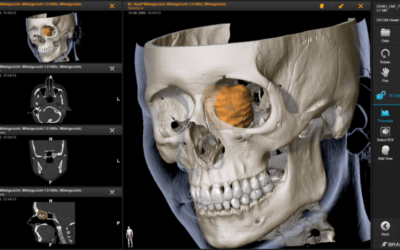Situational assessment and diagnosis are fundamental tools in hospital management. In this article, we will explore how these practices help identify areas for improvement and optimize hospital operations.
Índice del Articulo
Importance of the evaluation and situational diagnosis of the Hospital:
The situational assessment and diagnosis of a hospital are fundamental processes to thoroughly understand its environment, identify areas for improvement and make informed strategic decisions. Here the importance of carrying out a situational assessment and diagnosis is highlighted:
Understanding the Environment:
It facilitates a comprehensive understanding of the hospital environment by considering social, economic, demographic and health factors. This allows anticipating and adapting to changes, such as epidemiological trends, regulatory changes or economic fluctuations.
Identification of Needs and Priorities:
It facilitates the identification of specific needs of the population served by the hospital, allowing the establishment of priorities in medical services, equipment, personnel and health programs.
Optimization of Resources:
It facilitates the evaluation of the efficiency in the use of available resources, including personnel, medical equipment, financing and physical space. It allows the appropriate allocation of resources to maximize efficiency and minimize waste.
Improving Quality of Care:
Facilitates the identification of specific areas that require improvements in the quality of medical care, allowing the implementation of interventions and protocols to improve patient safety and the quality of medical services.
Strategic Planning:
Strategic planning provides a basis for the development of short, medium and long-term plans, facilitating the definition of realistic goals and objectives aligned with the needs of the community and the available resources.
Detection of Operational Problems:
Detecting operational problems consists of identifying operational and management problems that may affect the daily operation of the hospital. This practice allows for the implementation of solutions and improvements in internal processes to optimize the efficiency and quality of services.
Improving Administrative Efficiency:
Improving administrative efficiency involves evaluating administrative processes, from appointment management to billing and patient registration, with the aim of implementing systems and technologies that optimize efficiency in hospital administration.
Risk Management:
Risk management in the hospital setting involves identifying potential risks and threats to the safety of both patients and staff. This process facilitates the implementation of preventive measures and risk management protocols to ensure a safe environment in the hospital.
Human Resources Assessment:
Human resources assessment in the hospital setting involves analysing the availability and skills of staff, both medical and non-medical. This process facilitates the identification of training and development needs of staff to optimise their performance and ensure quality of care.
In summary, situational assessment and diagnosis are essential to the success and effectiveness of hospital management. They provide the basis for strategic decision-making, continuous improvement and adaptation to a dynamic and changing healthcare environment.

Tools used in the evaluation and situational diagnosis of the Hospital:
Situational assessment and diagnosis in a hospital involves the use of various tools and methods to collect, analyze and understand relevant information. Here are some of the tools commonly used in this process:
Interviews and Focus Groups:
Interviews and focus groups are qualitative tools that involve structured conversations with various stakeholders, including staff, patients and other stakeholders. The purpose of these interactions is to collect detailed information about perceptions, experiences and challenges related to the hospital situation.
Surveys and Questionnaires:
Surveys and questionnaires are tools that use standardized forms to systematically collect quantitative data and opinions. Their main purpose is to obtain quantifiable information about patient satisfaction, staff perceptions and other specific aspects related to the hospital environment.
Document Review:
Document review involves the analysis of internal and external documents, such as financial reports, hospital policies, quality records and regulations. The purpose of this activity is to obtain a detailed view of the hospital’s structure, processes and performance.
SWOT Analysis:
SWOT analysis involves the assessment of the Strengths, Weaknesses, Opportunities, and Threats facing the hospital. The purpose of this assessment is to identify both internal and external factors that affect the hospital’s ability to achieve its goals.
Process Analysis (Flowcharts):
Process analysis using flowcharts involves a visual representation of the hospital’s internal processes with the goal of identifying potential inefficiencies or areas for improvement. This approach is primarily intended to improve the efficiency and quality of the hospital’s operational processes.
Management Indicators:
The use of management indicators involves the use of key performance indicators (KPIs) to measure and evaluate the hospital’s performance in specific areas. The fundamental purpose is to quantify performance and establish measurable goals that contribute to improving efficiency and quality in different aspects of hospital management.
Root Cause Analysis:
Root cause analysis involves identifying the root causes of a specific problem or challenge within the hospital. The main purpose of this methodology is to address the underlying causes of problems rather than simply treating the symptoms, thus allowing for more effective and long-lasting solutions to be implemented.
Prioritization Matrix:
The prioritization matrix is a tool that classifies and prioritizes problems or areas for improvement based on their importance and urgency. The main purpose of this tool is to direct resources towards the areas that have the greatest impact, allowing for efficient management focused on the identified priorities.
The combination of these tools provides a comprehensive assessment and situational diagnosis that serves as a solid foundation for strategic planning and continuous improvement in a hospital environment.

Benefits of Hospital Situational Assessment and Diagnosis:
The assessment and situational diagnosis of a hospital offer a variety of benefits that positively impact management, quality of care, and satisfaction of both staff and patients. Some of the key benefits are highlighted here:
Identification of Opportunities for Improvement:
The identification of opportunities for improvement has the benefit of being able to recognize specific areas that require optimization in terms of processes, services, and resources within the hospital. This approach positively impacts by facilitating the implementation of changes that contribute to a continuous improvement in the quality of care provided.
Optimization of Resources:
Optimization of resources offers the benefit of evaluating the efficiency in the use of resources, such as personnel, medical equipment, and financing in the hospital. This approach has a significant impact by optimizing the allocation of resources, seeking to maximize operational efficiency and reduce unnecessary costs.
Improving the Quality of Care:
Improving the quality of care provides the benefit of identifying specific areas that require improvements in the quality of healthcare. This approach has a significant impact by facilitating the implementation of interventions and protocols aimed at improving patient safety and the overall quality of medical services.
Informed Decision Making:
Informed decision making offers the benefit of providing detailed data and analysis to support strategic and operational decisions. This approach has a significant impact by facilitating more informed decisions aligned with the hospital’s specific goals and needs.
Alignment with Strategic Objectives:
Alignment with strategic objectives offers the benefit of helping to align the hospital’s actions with its short, medium and long-term strategic objectives. This approach has a positive impact by contributing to effective strategic planning and the achievement of institutional goals.
Improved Risk Management:
Improved risk management offers the benefit of identifying potential risks and threats to patient and staff safety. This approach has a positive impact by facilitating the implementation of preventative measures and risk management protocols to improve safety.
Improving Patient Experience:
Improving patient experience offers the benefit of facilitating the identification of areas of opportunity to improve patient experience and satisfaction. This approach has a positive impact by contributing to patient loyalty and improving the hospital’s reputation.
Operational Efficiency:
Operational efficiency offers the benefit of identifying inefficiencies in operational and administrative processes, which has a positive impact by optimizing operational efficiency, reducing waiting times and improving staff productivity.
Adaptability to Change:
Adaptability to change offers the benefit of facilitating anticipation and adaptation to changes in the environment, such as health regulations, technological advances and demographic changes. The impact is to improve the hospital’s ability to respond effectively to external changes.
Strengthening Financial Management:
Strengthening financial management offers the benefit of assessing the hospital’s financial sustainability and improving cost and revenue management. The impact is to contribute to the hospital’s long-term financial stability and viability.

Frequently Asked Questions about Hospital Situational Assessment and Diagnosis:
What is Situational Assessment and Diagnosis in a hospital?
Situational Assessment and Diagnosis is a comprehensive process that analyzes and evaluates various aspects of a hospital, including infrastructure, equipment, human resources, workflows and information systems to identify areas for improvement and optimization.
Why is it important to conduct a situational assessment in a hospital?
Situational assessment is crucial to identify areas of opportunity, improve operational efficiency, ensure patient safety, and optimize the use of resources to provide quality healthcare.
What are the main aspects evaluated in a hospital situational diagnosis?
Aspects such as physical infrastructure, the state of medical equipment, clinical data management, staff training, patient care processes, and safety and regulatory compliance are evaluated.
How is a Situational Assessment and Diagnosis carried out?
The process involves collecting data, conducting physical inspections, interviewing staff, reviewing records, and analyzing workflows. Clinical engineers play an important role in the evaluation of medical technologies and information systems.
What are the benefits of conducting a situational assessment on a regular basis?
Benefits include early identification of problems, continuous improvement of care quality, optimization of resources, cost reduction and strengthening of the hospital’s response capacity to changing situations.
How are the findings and recommendations from the situational assessment addressed?
Action plans are developed based on the findings, involving the various departments and health professionals. Implementation and monitoring are critical to achieving sustainable improvements.
How is medical technology assessed during a situational assessment?
Clinical engineers review the status and performance of medical equipment, ensuring compliance with regulations, availability, preventive maintenance and technological updates to ensure its efficiency and safety.
What tools and methodologies are used in Situational Assessment and Diagnosis?
Tools such as surveys, interviews, statistical data analysis, physical and technological inspections, as well as specific methodologies such as SWOT analysis (Strengths, Opportunities, Weaknesses, Threats) and benchmarking are used.
How does Situational Assessment affect strategic decision making in a hospital?
It provides valuable information for strategic decision-making, as it identifies critical areas that require intervention, resource optimization and the implementation of significant changes to improve the efficiency and quality of care.
How is the continuity of the situational assessment process ensured over time?
Continuity is ensured by establishing regular assessment programmes, updating protocols and procedures, and fostering a culture of continuous improvement in the institution. Multidisciplinary participation and collaboration are also key.
Conclusion on the evaluation and situational diagnosis of the Hospital:
Situational assessment and diagnosis are essential tools in hospital management, providing valuable information to improve the quality of care and optimize hospital operations. By using appropriate tools and implementing corrective measures, it is possible to achieve significant improvements in clinical management and patient satisfaction. Situational assessment and diagnosis must be ongoing practices, adapting to changes and hospital needs to ensure optimal performance.






0 Comments